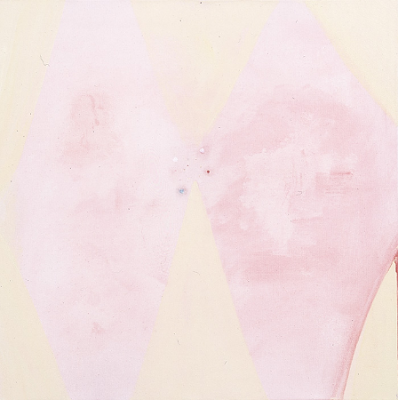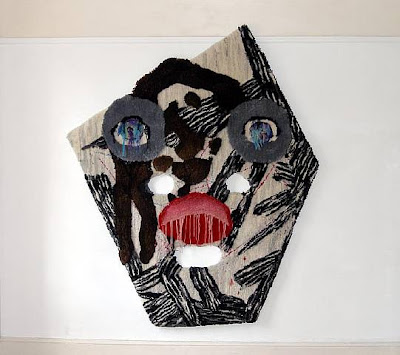
Tuesday, January 25, 2011
Monday, January 24, 2011
Olaf Breuning
Friday, January 21, 2011
Hiroshi Sugito
Fabian Marcaccio
Tuesday, January 18, 2011
Shen Yun Performing Arts


Last week, I was fortunate enough to experience one of the last performances of the season by the Shen Yun performing arts company. Thanks to my friends who had an extra ticket, because prior to that evening, not only had I never seen classical Chinese dance in person, but I was even unaware of its existence. Apparently, despite classical Chinese dance predating ballet by a scant several thousand years, many of us Westerners remain ignorant of the art form. I was completely embarrassed by my ignorance, but also euphoric and delighted about being introduced to an art of such poetic precision and beauty.
Both culturally and philosophically, the Chinese have always had such a completely different approach to life, than we have in the West. Traditional Chinese painting, a form that existed several hundred years before the Common Era, portrayed the tiny, insignificant human life amidst the vastness of nature. When Baudrillard talks about the naturally sublime desert surpassing the pretension of culture and art in his incendiary and wildly entertaining, America, he isn’t taking into consideration traditional Eastern art forms, which lack the hubris of the West. This is no longer always the case with the proliferation of Western ideals brought about by globalization, but I would argue, that a specific humility and beauty, in diametrical opposition to the occidental approach still exists in many contemporary Chinese art forms, as evidenced in the films of the Hong Kong director Wong Kar-wai. His short, The Hand, captures the fragility and impermanence of love and life in his moving tale about a romance between a tailor and a prostitute, that he creates spectacular garments for. If it were shot by any Western filmmaker, except maybe Fellini, it would more than likely be mired in some sort of residual herd morality, which no matter how secularly any of us Westerners may be raised most of us still have difficulty shaking.
The Shen Yun performing arts company fuses classical Chinese dance with ballet, Chinese instruments with Western orchestral instruments, and also traditional Chinese singing. Each year, the company spends half a year painstakingly choreographing new dances, plotlines, musical compositions, and costumes. The rest of time, it spends touring the states.
With plot lines ranging between playful mischievous monks and more serious subjects of victims persecuted by the Communists, the company fuses historical references with currently relevant political issues. Two narrators explain in depth the rich history for members in the audience who are less than knowledgeable about this breathtaking cultural tradition.
Color plays a crucial role in carrying meaning. The intensity of the erotic, joyous, bright, unabashed pigments contrasts itself with the blood curdling Thanatos of the black costumes of the communists with their scarlet sickles. Pink, the color of cherry blossoms and impermanence in the East plays a continual role, reinforcing the songs of the cruelty, pathos, and mystery of the brevity of existence. In one of the most poignant performances, the performers mimic the instantaneous bloom of the cherry blossoms, with such precision, that both my friend Diana and I gasped, turning to one another simultaneously, exclaiming, “It’s just like it happens in life, how’d they do that?”
The stirring experience of traditional Chinese dance was coupled with the heart wrenching realization that such an incredible art form cannot exist in its native China, because of the totalitarian Marxist regime that has never been accepting of any art form, outlawing everything that does not coincide with utterly thoughtless socialist realism that invokes the glory of the state. Thanks to Shen Yun the traditions of Chinese dance that span five thousand years can live on at least in America. This injustice was something that I can relate to, having a family who lived through Communism in Poland, who know the cruelties that can be inflicted by Socialist ideologies. My mother, a boldly defiant woman lived in terror for weeks when she heard a rumor of herself having appeared in an anti-Communist rally, which she had never even ever attended. My actress aunt would show me films of what it was like in the “good old days,” when artists were seized by the Communist police and brutally tortured for no other reason than that they were artists. So, when I encounter some generic, run-of-the-mill, well fed trendy campus Marxist, who attended boarding school and ivy leagues never knowing a day of hunger, or very few, if any restrictions on freedom, I have to side with Baudrillard, with whom I’ve recently become besotted with, when he smugly and eloquently jeers at such a confused and incoherent romanticisation.
Thank you so much to my new friends, Asmaa and Adarsh for such an incredible gift, that gave me a new awareness and appreciation for a such a magnificent tradition that I would have otherwise been unaware of.
Friday, January 14, 2011
Terence Koh

These Decades that We Never Sleep, Black Light 2004
crystal chandelier, paint, lollipops, vegetable matter, human and horse hair, mineral oil, rope from a ship found after midnight, glass shards, stones and artist's blood and shit



The Camel was God, the Camel was Shot, 2007
Cast of Artist's body, bronze and white patina










































